I’ve now been blogging for 5 1/2 years and in the beginning I had no audience to speak of so many current readers have never seen some of my very early posts. I believe a few of those posts deserve another look so occasionally I rework one of them (usually reprocessing the images and rewriting some or all of the text) and post the images again. This post is one of those – a blast from the distant past.
In June of 2011 I photographed male Short-eared Owls fighting over disputed nesting territory in Montana’s Centennial Valley. When I arrived in the valley I expected them to be already nesting but because of a very cold spring nesting hadn’t even begun. Instead they were competing for territory and mates. On one morning I was incredibly lucky to find two males trying to impress a female with their aerial prowess and fighting skills. They were so engrossed in their activities that they ignored me completely.
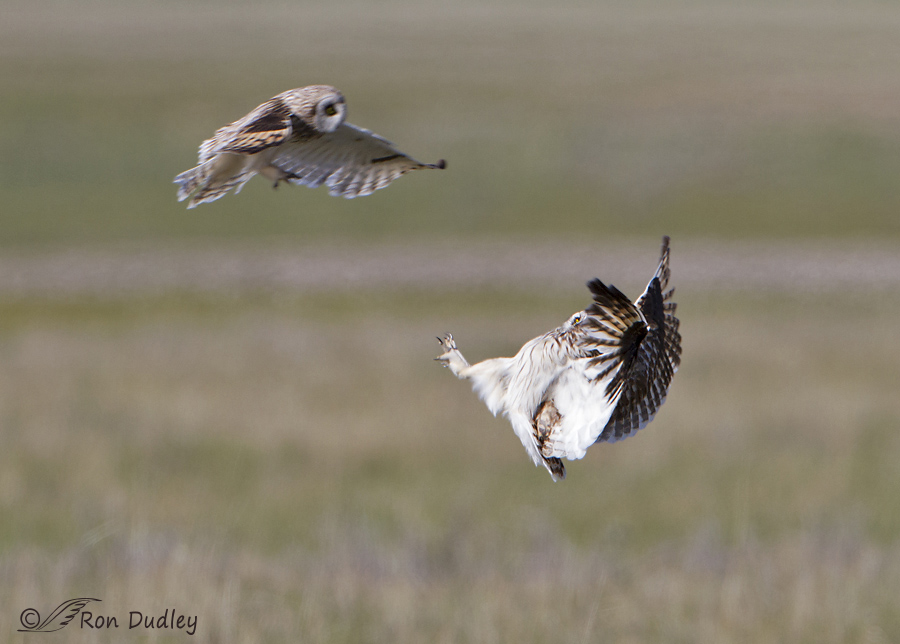
Often one male was on the ground as another male came in to attack so at the last second the grounded male would jump up to defend itself.
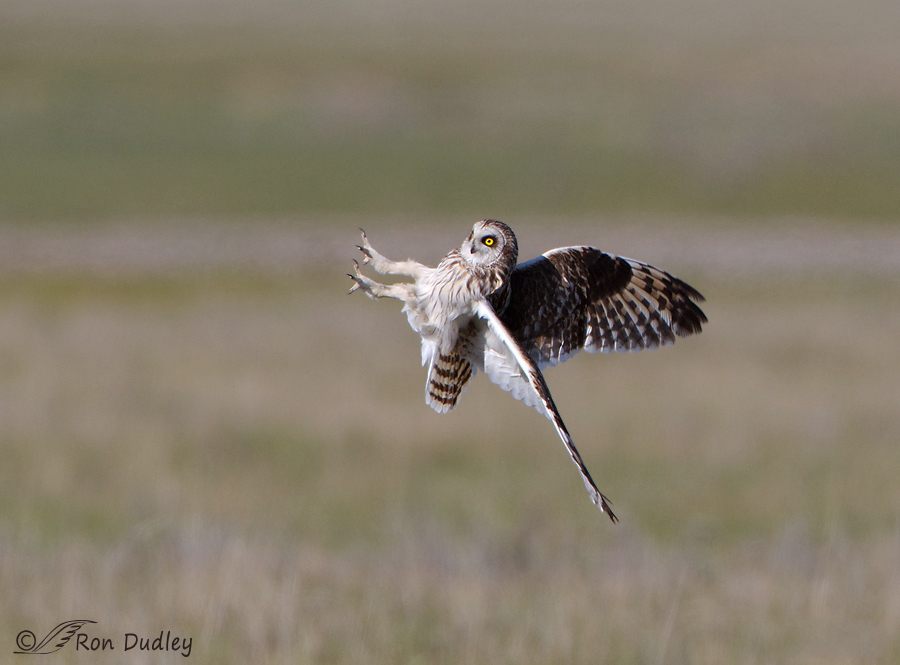
In order to get their talons into an effective defensive position for an attack from above they had to assume some interesting body positions. Here the aggressor has already passed by.
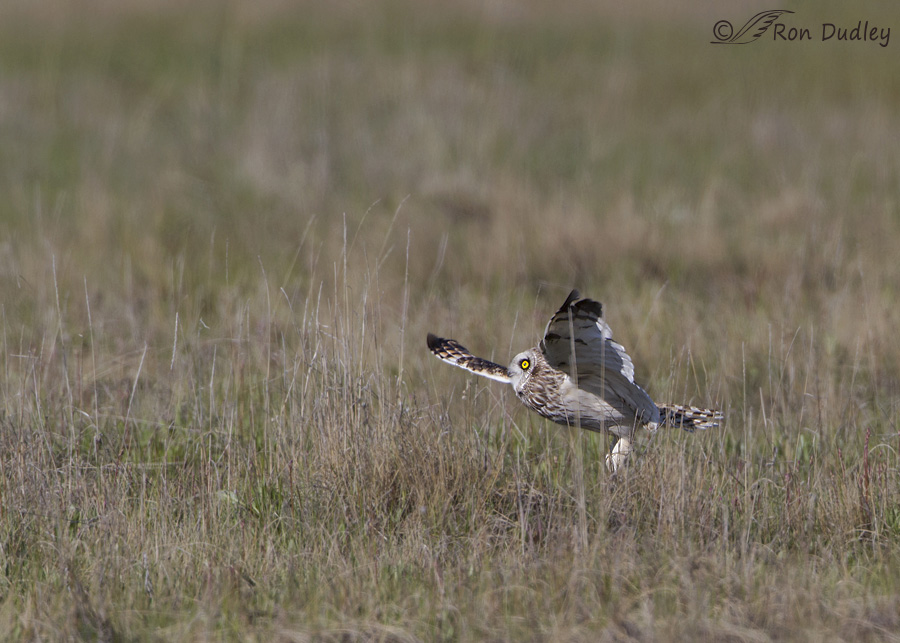
This male sees its tormentor approaching but it’s coming in low…
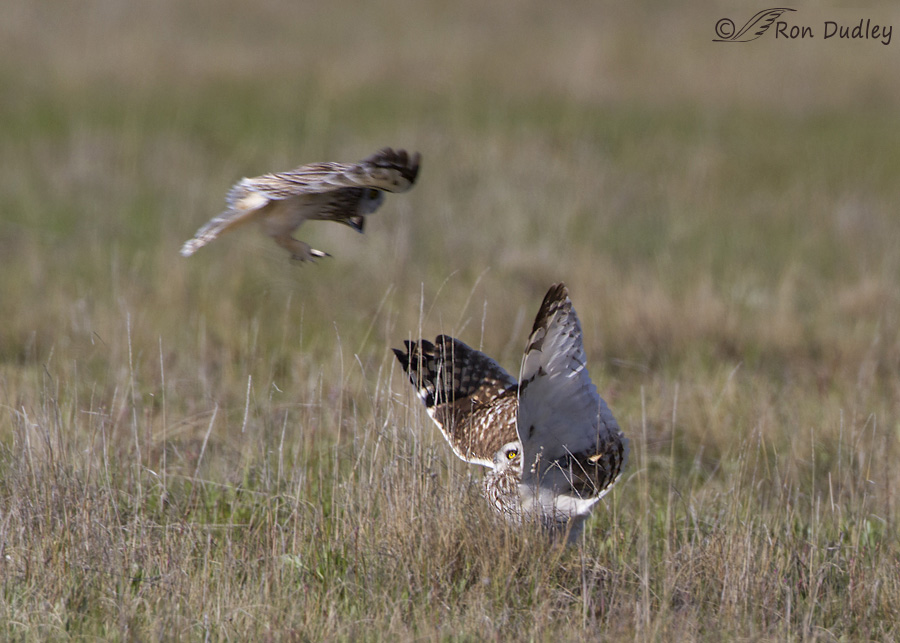
so this time it stayed on the ground and its attacker passed just overhead.
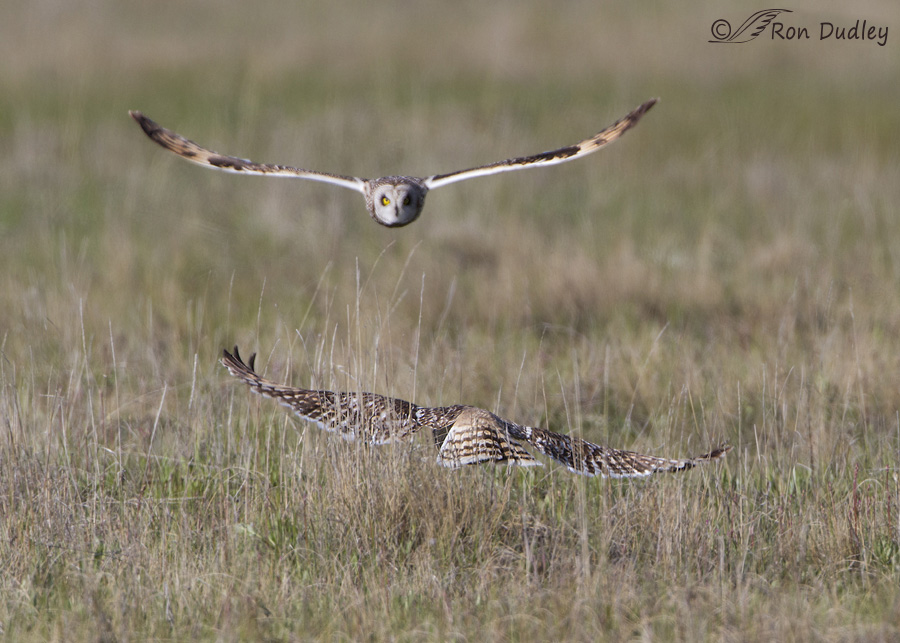
In another attack the owl on the ground…
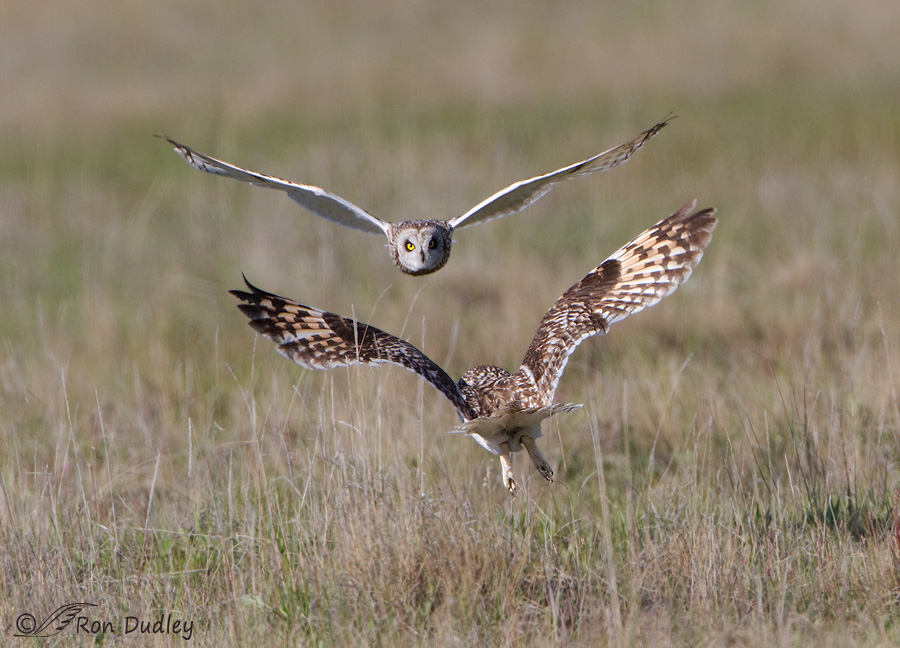
rose up to meet its challenger but apparently sensed that no contact would be made…
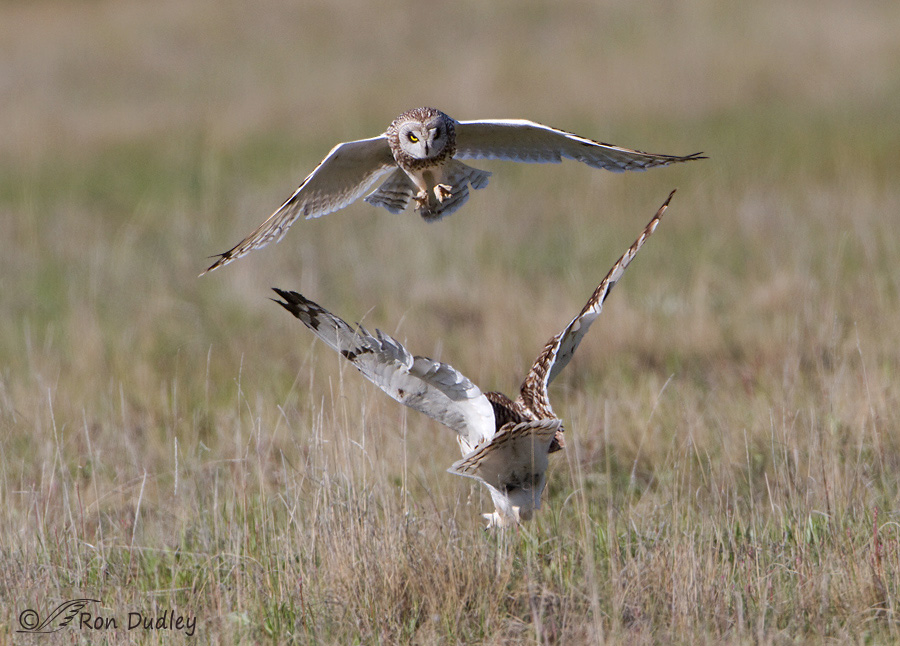
so it dropped back to the ground as the incoming bird flared up and away.
As was often the case the birds didn’t make actual contact. In researching this behavior I’ve learned that they will sometimes lock talons and fall to the ground before releasing. I suspect that as they rush toward each other they look for a weakness in defense – if they spot one in the other birds defensive posture they would likely make physical contact.
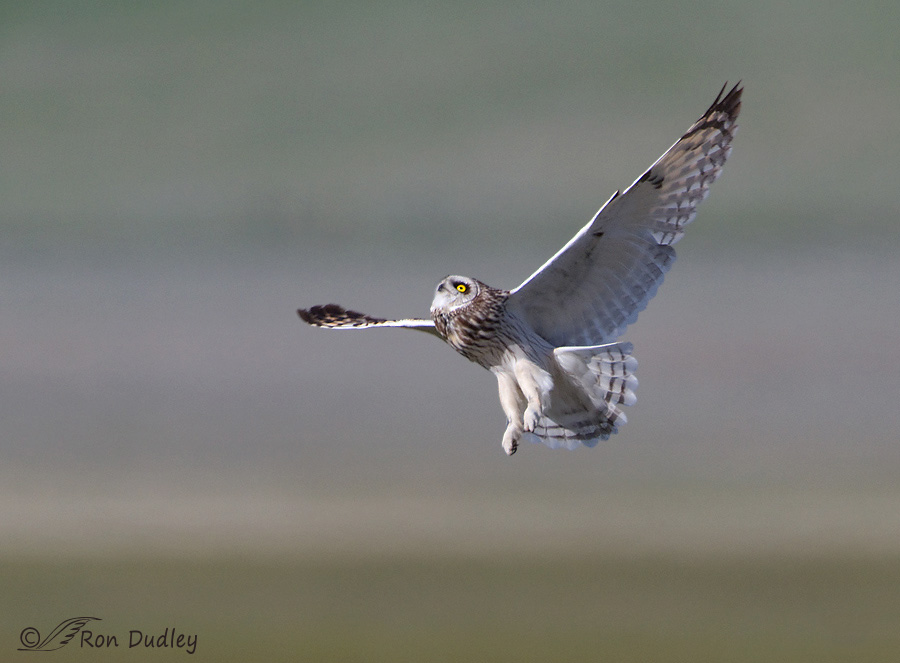
Most of the time both birds stayed near the ground but occasionally one of the owls would fly several hundred feet up and circle over the other male (and the female, who was on the ground watching the entire process) and then begin a wing-clapping display that is part of an acrobatic aerial display called “sky dancing”. In this behavior the owl shows exaggerated wing beats and claps its wing tips together which makes a sound that resembles a person slapping their thigh with an open hand at a fast speed. I could hear the sound very clearly even with the bird flying so high.
One of the males had been performing this clapping display which apparently didn’t sit well with the male on the ground so it took off and rose to challenge the show-off bird.
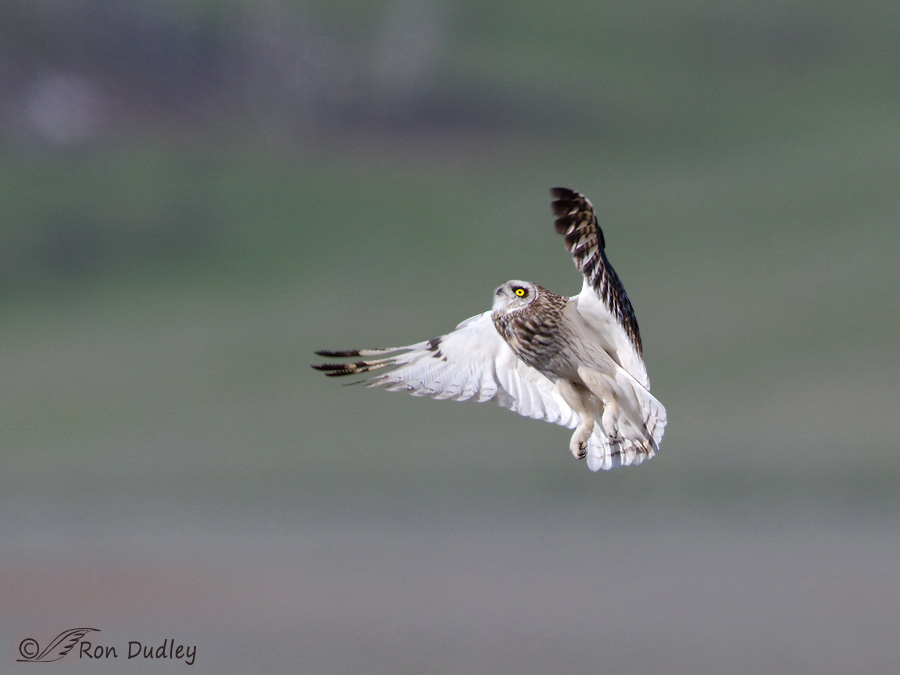
Approaching the other male who is much higher up…
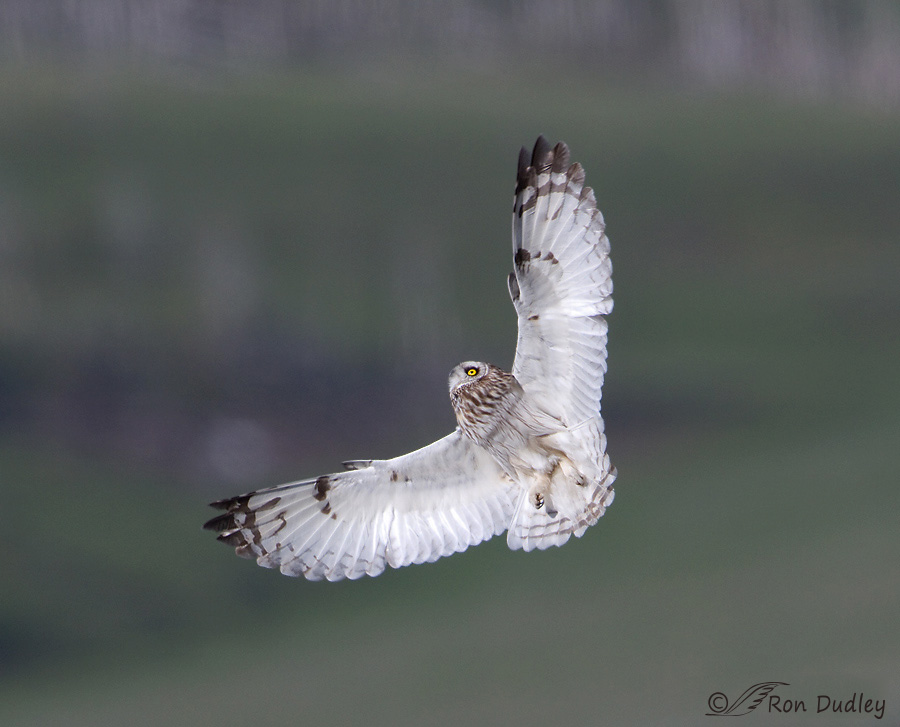
Almost there.
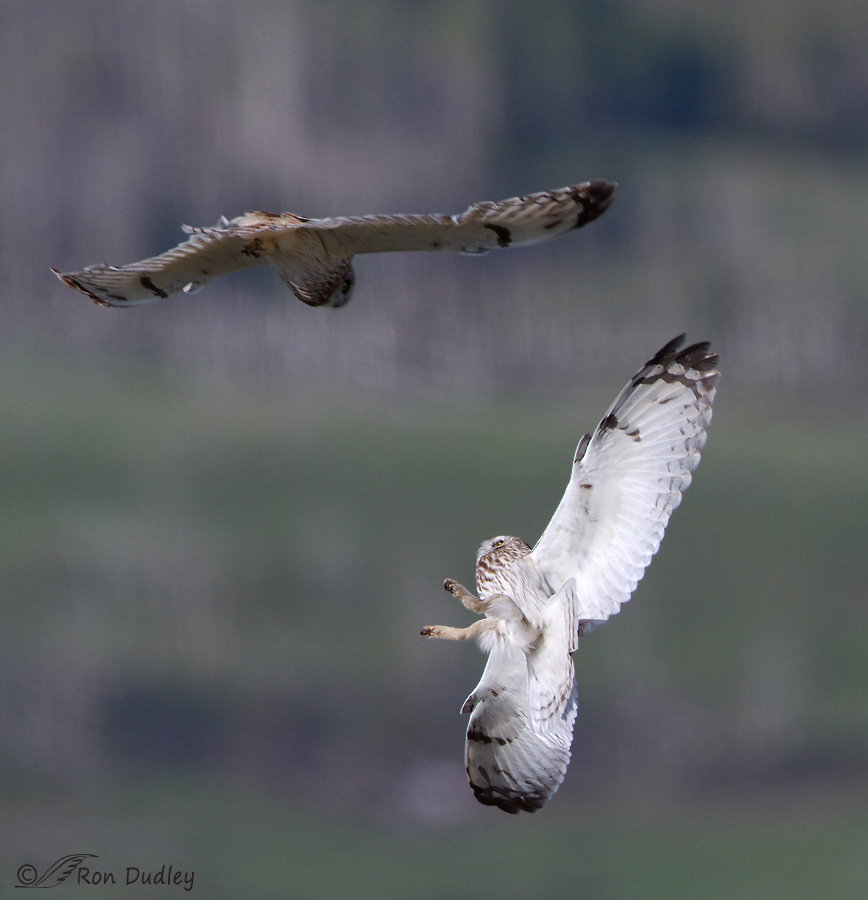
This time I thought the aggressor might actually make physical contact since the other bird doesn’t seem to be in a very effective defensive posture
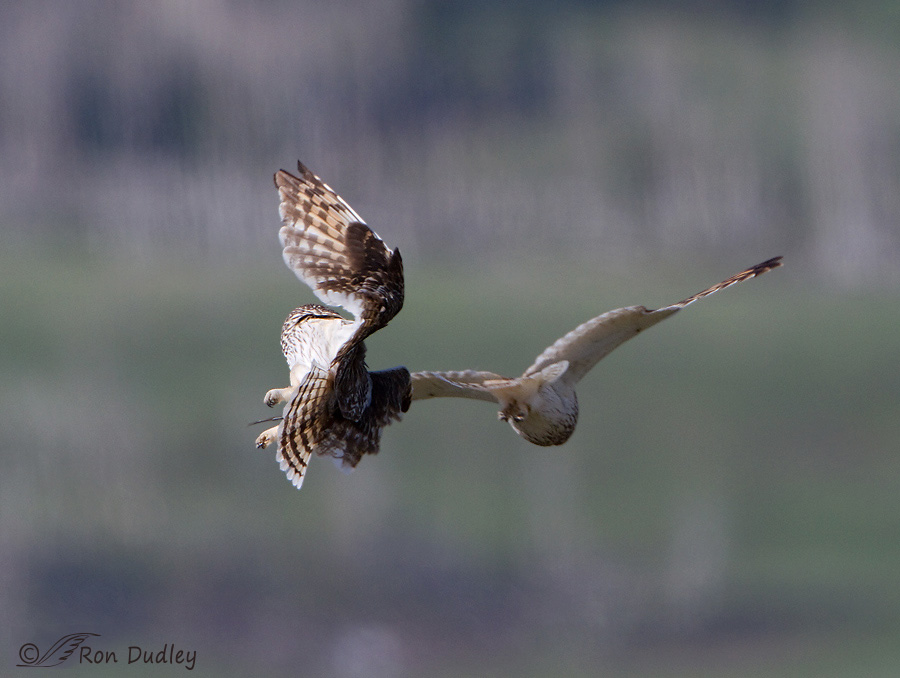
But he didn’t. The aggressor, on the left, seems to have deliberately aimed behind the other owl and I don’t believe they made actual contact.
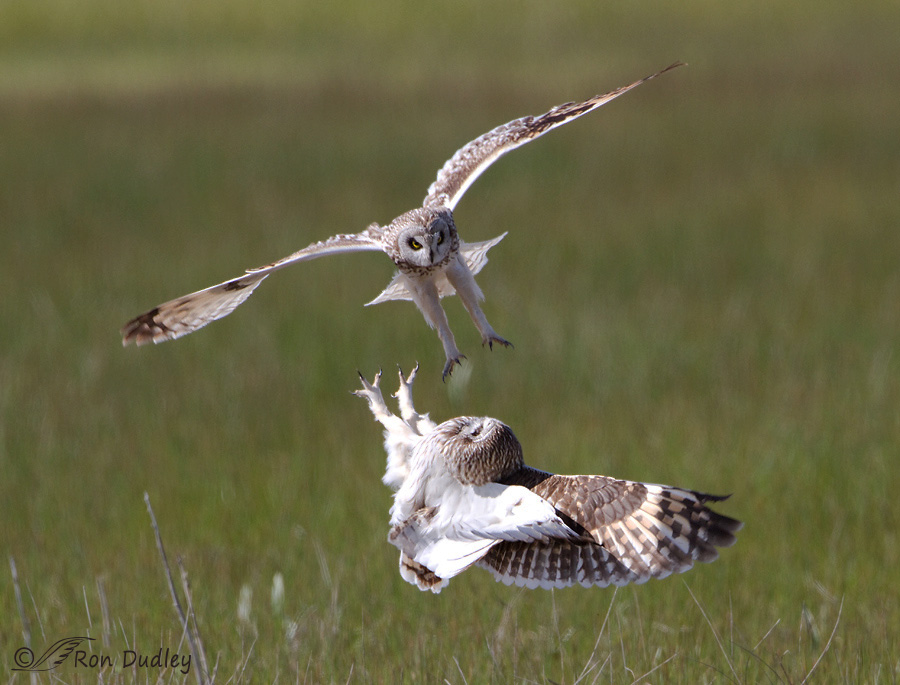
But most of the time the aggression played out very close to the ground. Often both birds would be on the ground several hundred yards apart but watching each other intently when one would take off and rush the other. Typically the owl on the ground would until the last second to pop up and present its talons defensively.
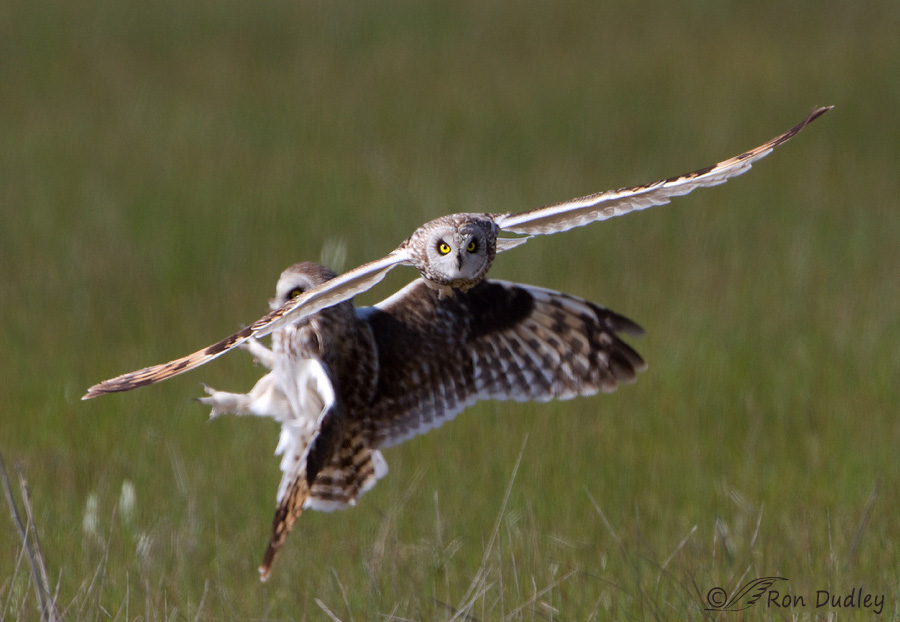
But again, no apparent contact.
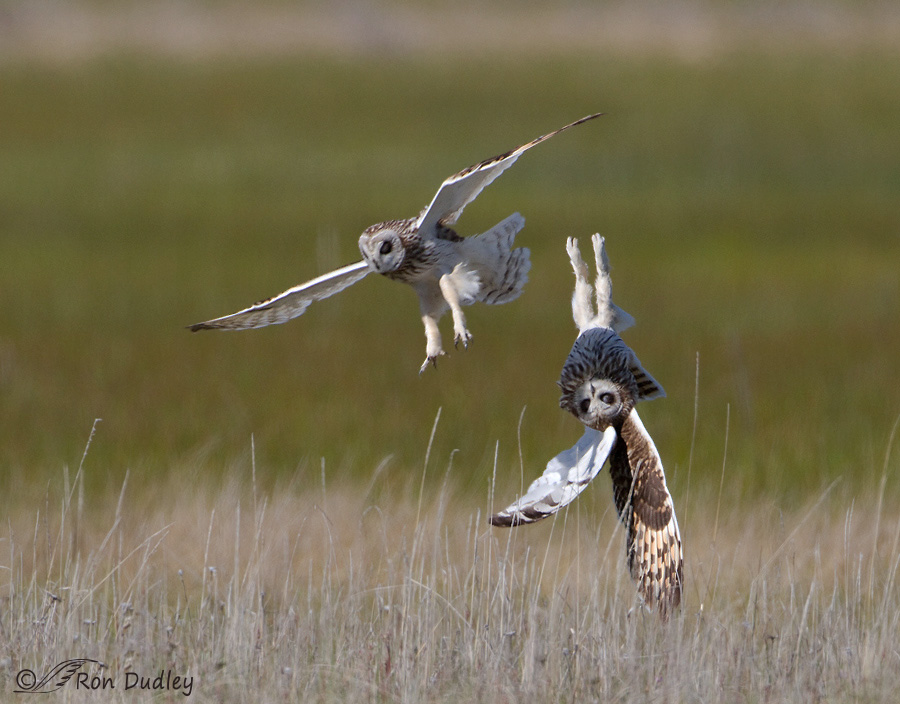
The action was so fast and furious at the point of potential contact that I usually didn’t even know what I’d captured until I got back to my campsite and reviewed my images. This shot makes me grin widely every time I see it.
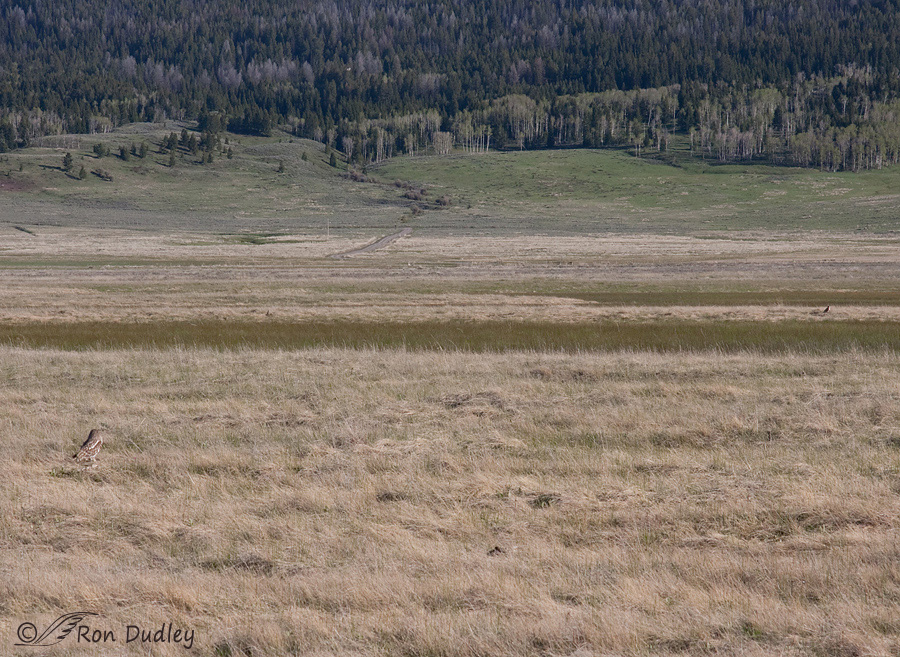
I thought this photo would help the viewer put the combat grounds and some of the behavior in perspective. Here you can see both males eyeing each other from afar and watching for an impending attack (the distant owl is small and near the right edge of the frame).
Believe me, getting an owl in focus in flight while it’s carrying a vole is much easier than when they’re fighting. Short-ears usually have moth-like buoyant flight with slow deliberate wing beats that make them relatively easy to follow with a long lens. That’s definitely not the case when they get close to each other in a skirmish. Their defensive and offensive maneuvers then are erratic, unpredictable, lightning quick and hellishly difficult to track. I got very few technically strong images of the behavior and I’m sure you’ve noticed that some of the owls in these photos are less than tack-sharp and the changing lighting conditions combined with the bright white ventral surfaces of the males made for some blown whites. Even so, I’m still delighted to have been able to get the images I did and to see the behaviors.
For me, this was a morning to remember.
Ron
Note: I apologize for not including my camera techs. I intended to but last-minute computer glitches (two of them, unrelated) didn’t allow the necessary time.


Stunning shots, Ron!
Thank you for your amazing photos and the stories. I live on the Chesapeake bay and get some nice shots. Your past students must be so proud of you.
Wow, wonderful photos. It’s not often one gets to see a feud, let alone photograph it. I gather the Owl landed on its feet lol.
Simply amazing, Ron! I can only imagine that you were grinning ear to ear after seeing the images that you captured. Thanks for giving us a glimpse into their world!
Speechless. Unbelievable photos. How lucky you were to witness this especially since no owl got injured. The upside down owl is my favorite of course. Thanks Ron!
Add me to the list of people shouting WOW from the sidelines.
How amazing.
How incredible.
Such a privilege to see.
And that upside down shot is sublime. How it ‘recovered’ before hitting the ground blows me away.
“How it ‘recovered’ before hitting the ground blows me away”
I couldn’t even tell you how it did, EC. It all happened so darned fast…
Day after day, time after time you leave me spellbound and amazed, Ron! I’ve thoroughly enjoyed all the posts since I last commented. I have a little extra (sick) time today and I’m absolutely blown away by today’s post. Fantastic images, technically and behaviorally! You really brought home an outstanding set with these. The insight you provided about the defensive postures / talons was especially interesting to me as I photographed a three-way Osprey battle last spring. Like in your situation, the action unfolded so quickly I didn’t fully comprehend what happened until reviewing the images afterward.
This is an spectacular set; a real treat to see the stop-action behavior. You did a phenomenal job with all aspects, including the research findings and insight you shared in the post. Thanks so much for posting these!
Thanks very much, Kim. I hope your sick day off is spent as pleasantly as possible and it sounds like these images may have helped a little…
I would consider myself very fortunate to see ONE owl! But to have three, and owl drama to boot! Fantastic! Your shots and commentary are great. I only discovered your blog last year, so these images are new to me. Thanks for reposting!
“I would consider myself very fortunate to see ONE owl! But to have three, and owl drama to boot!”
Well said, Jane. Your comment reminded me of how very lucky I was that morning.
If the upside dowm combatant in the last image had flap his wings and not continued to rotate, he would have driven himself head first into the ground!!!
I see what you mean, Patty…
Always a treat to see what you share. Thanks for displaying these classics a second time. It’s my introduction to them and I’ll never look at owls the same way again!
“It’s my introduction to them”
Alison, Short-eared Owls are among the most wonderful and appealing raptors I’ve ever photographed. I’m quite worried about them though, their numbers are declining in many areas.
Thank you reposting this amazing, amazing series of an incredible encounter!!! I have never seen so many of the fantastic things you’ve been so doggone lucky to have witnessed and never would if you weren’t willing to share them. I don’t know exactly how long I’ve been following your blog, but can’t help but wonder what wonderful stuff I’ve missed…whether it’s something brand new or a repeat, I love to see it!!!
“can’t help but wonder what wonderful stuff I’ve missed”
Never fear, Patty, I’ll be posting a few more of these older posts occasionally in the future and I’ll try to choose some of the more interesting ones.
Don’t forget this older Ermine shots!
I’m wondering does your passion, hobby, taken these great pictures sometimes is like fishing? Meaning are there times when you spend hours and nothing is happening, just like fishing, watching your line and nothing is bitting? These pictures today, the Eyes, drawn to them.
“are there times when you spend hours and nothing is happening, just like fishing, watching your line and nothing is biting?”
There sure are, Steven! It happens more often than I like to think about…
Great series. I wonder how it would be if you had back then the gear you have today.
Thank you for the last photo. It helps me to see not only the setting where the action took place but also how far you were from the owls.
“I wonder how it would be if you had back then the gear you have today”
Jorge, I’ve often wondered the same thing, mostly for the faster burst rate and larger buffer of my present camera. I can almost imagine some of the shots I missed in-between clicks and when my buffer had filled and I had to wait for it to clear.
Thanks for sharing this old post Ron. Fascinating insight, and great photos of the short-eared owls. I had no idea that males would fight like this. Awkward flight positions indeed. I don’t often comment, but do try and take a few minutes each day and read your blog. Keep on spreading your great photos and knowledge.
There’s never a need to “comment often”, Colin. I’m just glad to know you’re out there.
Wow! What an amazing series of images! Thank you for reworking and reposting!
I’m glad you liked them, Gail. Thanks.
(Insert ridiculously redundant and repetitive WOW right here, plus a side order of YOWZER!) Amazing shots, Ron!
Gotta admit I’m a little shocked at their wings making any sound whatsoever given the flight characteristics of their feathers. And that it was loud enough for you to hear it from some distance away is pretty remarkable. But then again, you learn something new every day–or you should. That’s my new thing for this morning. Thank you for treating me to stuff I haven’t yet seen/heard! You ROCK!
“I’m a little shocked at their wings making any sound whatsoever given the flight characteristics of their feathers”
Laura, the slapping sound is made when the wingtips come together hard on the downbeat. I could hear it clearly even when the bird was an estimated 200′ above me.
I TOO HAVE BEEN HAVING COMPUTER PROBLEMS, AND THOSE PROBLEMS HAVE PREVENTING ME FROM SAYING, “WOW, WOW, WOW,!!!!” IN A VERY LOUD VOICE. THIS IS ANOTHER SPECTACULAR SERIES RON, ONE OF YOUR BEST. I’M SURPRISED THAT YOUR CAMERA BUFFER DID NOT FILL, AND PREVENT FURTHER SHOOTING. ONCE AGAIN YOU HAVE DEMONSTRATED THAT EXCELLENT EQUIPMENT, IN THE HANDS OF A EXCEEDINGLY COMPETENT PHOTOGRAPHER EQUALS SPECTACULAR RESULTS. WELL DONE RON, VERY WELL DONE…;-)))
Roger, If I remember correctly my buffer filled more than once that morning.
Yup, I’m one of those that hadn’t seen these fantastic shots! WOW! WOW! WOW! You have to be a camera acrobat yourself tracking these guys!! What a wonderful series of male Short-eared Owl territorial and mating behavior. Looking at the second to last shot, the upside down owl is so close to the ground, did he or either of them get injured?
This is a fantastic show, many thanks for sharing.
“did he or either of them get injured?”
Dick, not only did neither bird get injured while I was there, I never even saw them make actual contact. They came AWFULLY close though.
Sweet series of images!! What a morning.
A morning I won’t soon forget, Keith. Thank you.
Wow! I love this. I can see why it was a morning to remember–it would be for me as well. Thank you so much for sharing your wonderful experience and your fabulous photos!
Thanks very much, Sharon.
WOW! Has me grinning ear to ear! Not often one would come across that behavior I’m sure.
Not often one would come across that behavior I’m sure.
This was the only time for me, Judy – at least up close.
Amazing series of images.
Thanks, Rich.
Fantastic series Ron…no apologies for necessary for any of these pictures as they are all amazing. My jaw just drops as I scroll down and view one wonderful pic after another. I too have SEOs that fly over a particular location and I’ve tried to get close. I have a camo personal shooting blind that I wear and sat on the ground hoping to get low or extremely close shots. It seems that it only takes one owl to fly close, give me a sniff and then turn away. Then, the other 6-8 owls that are flying never approach. After several hours of watching them hunt a few hundred yards away, I leave. They immediately return to where I was and hunt. Question: Do you know if there is any such thing as “effective camouflage” when it comes to SEOs? Or is their vision/hearing so sharp, that anything we do as humans would immediately be found out for what it is?
Zaphir, personally I don’t think any camo would be effective enough for the owls to not know you’re there. These owls were close to a dirt road and acclimated somewhat to vehicles and I was shooting them from my pickup and never got out. If I had they’d have vamoosed.